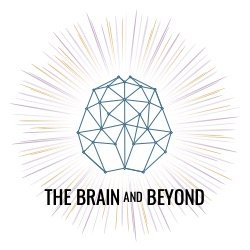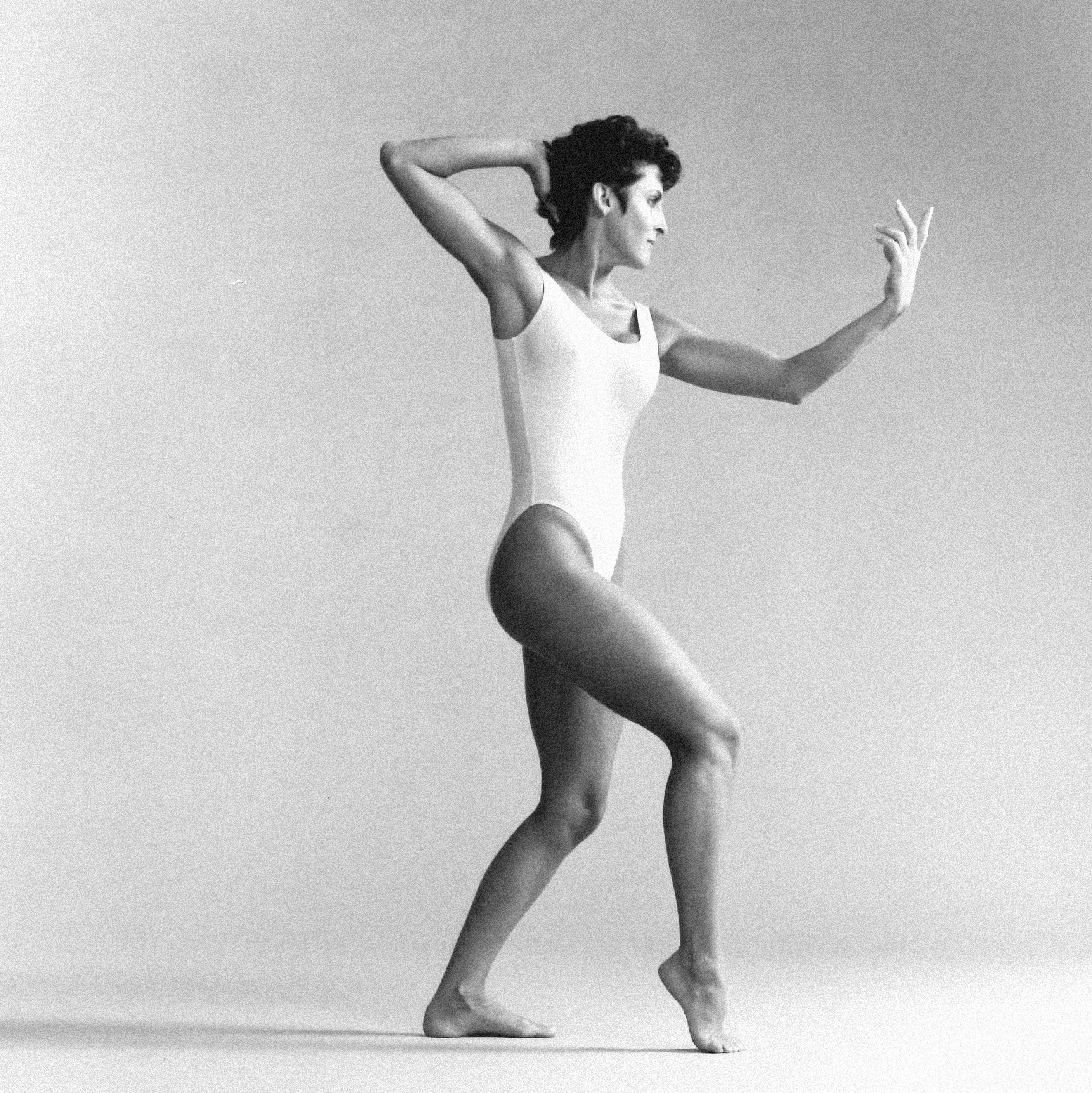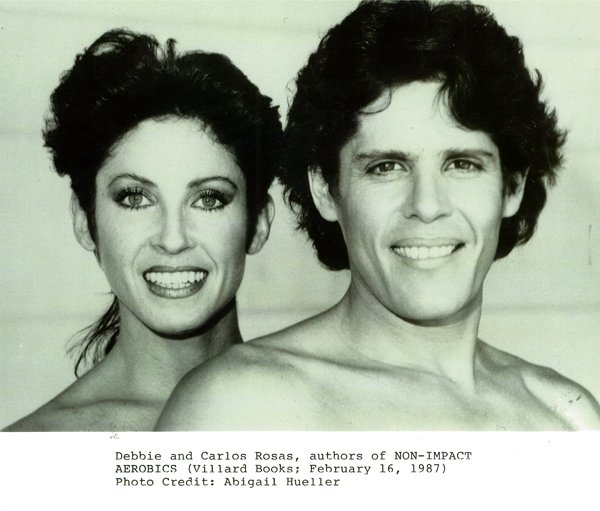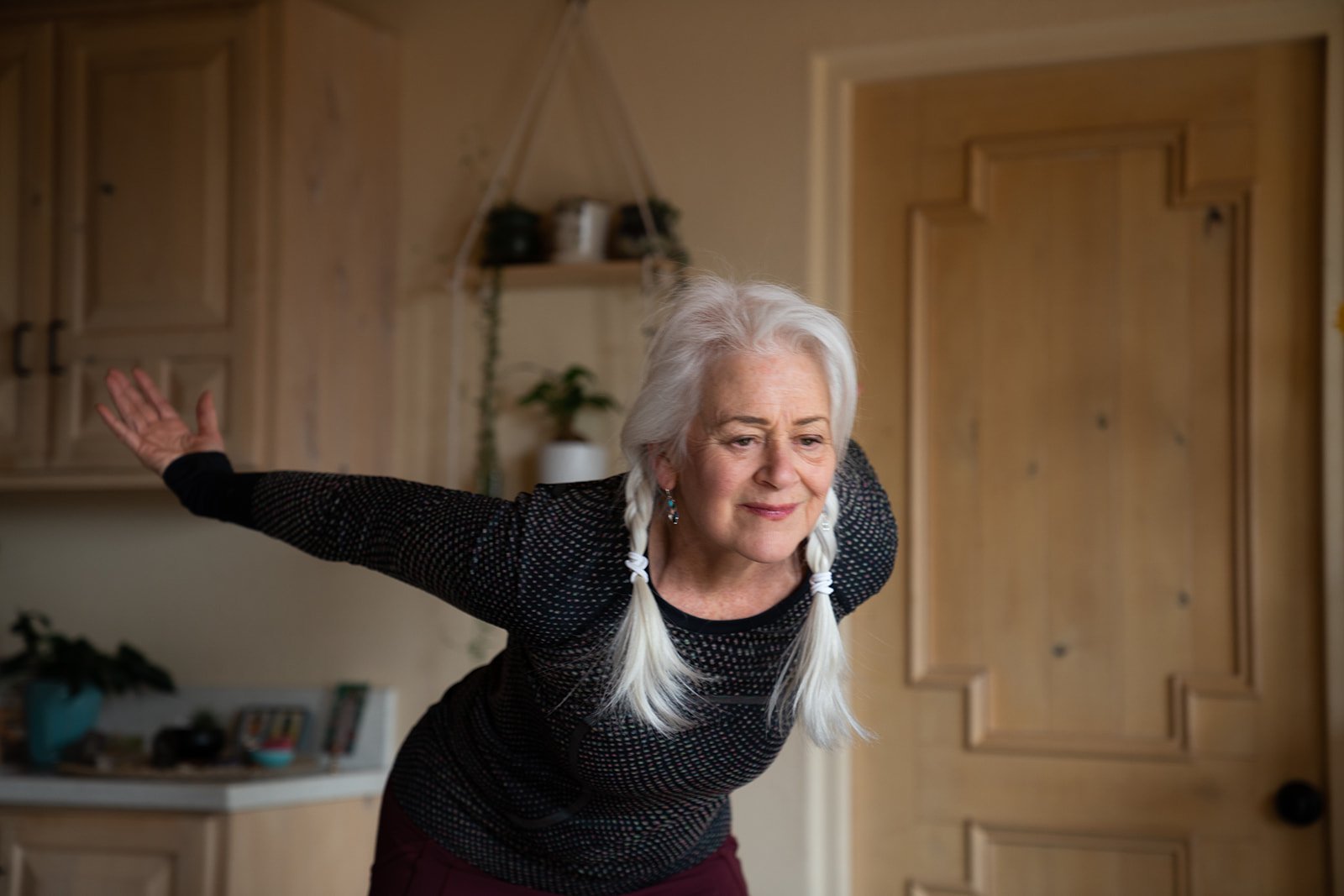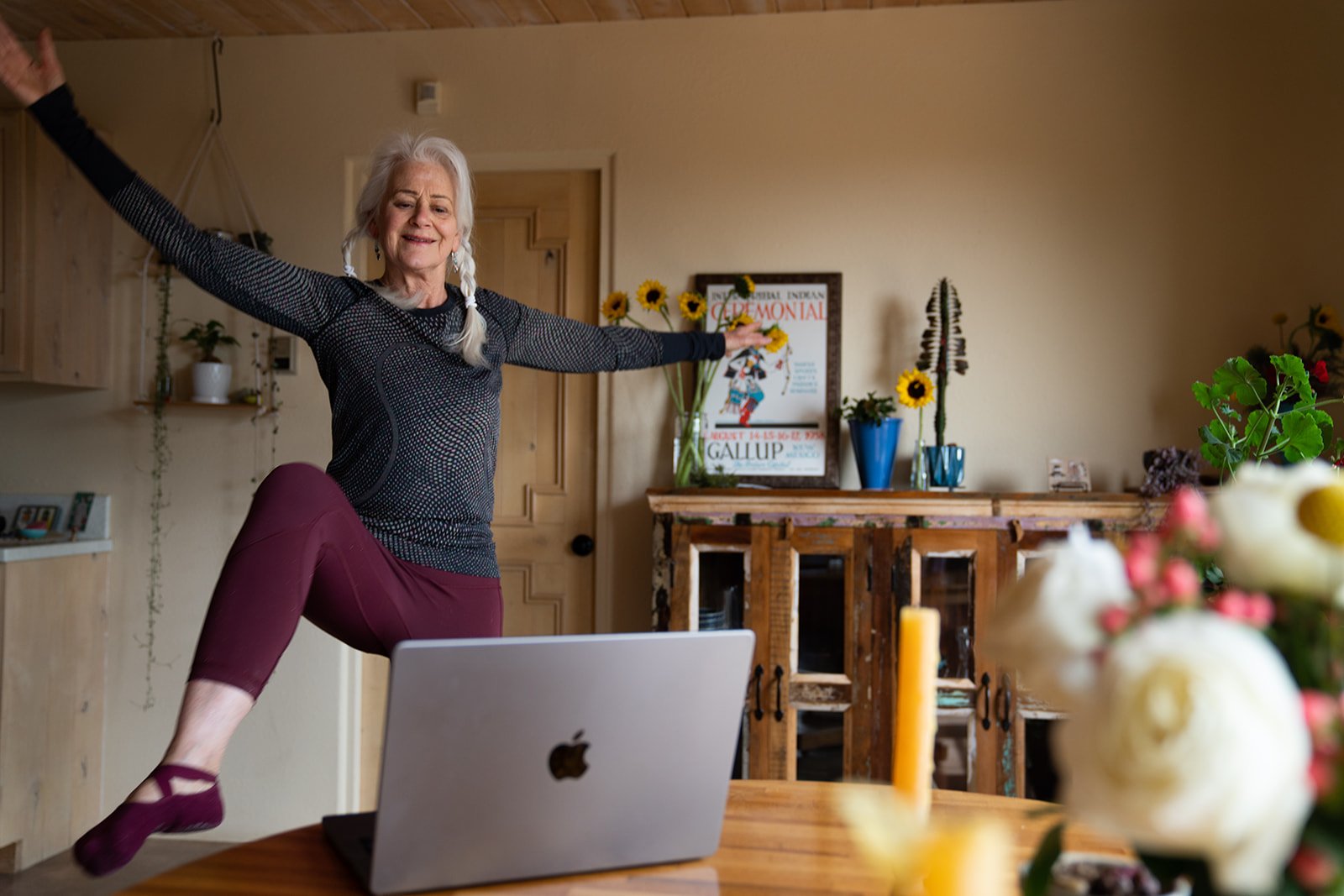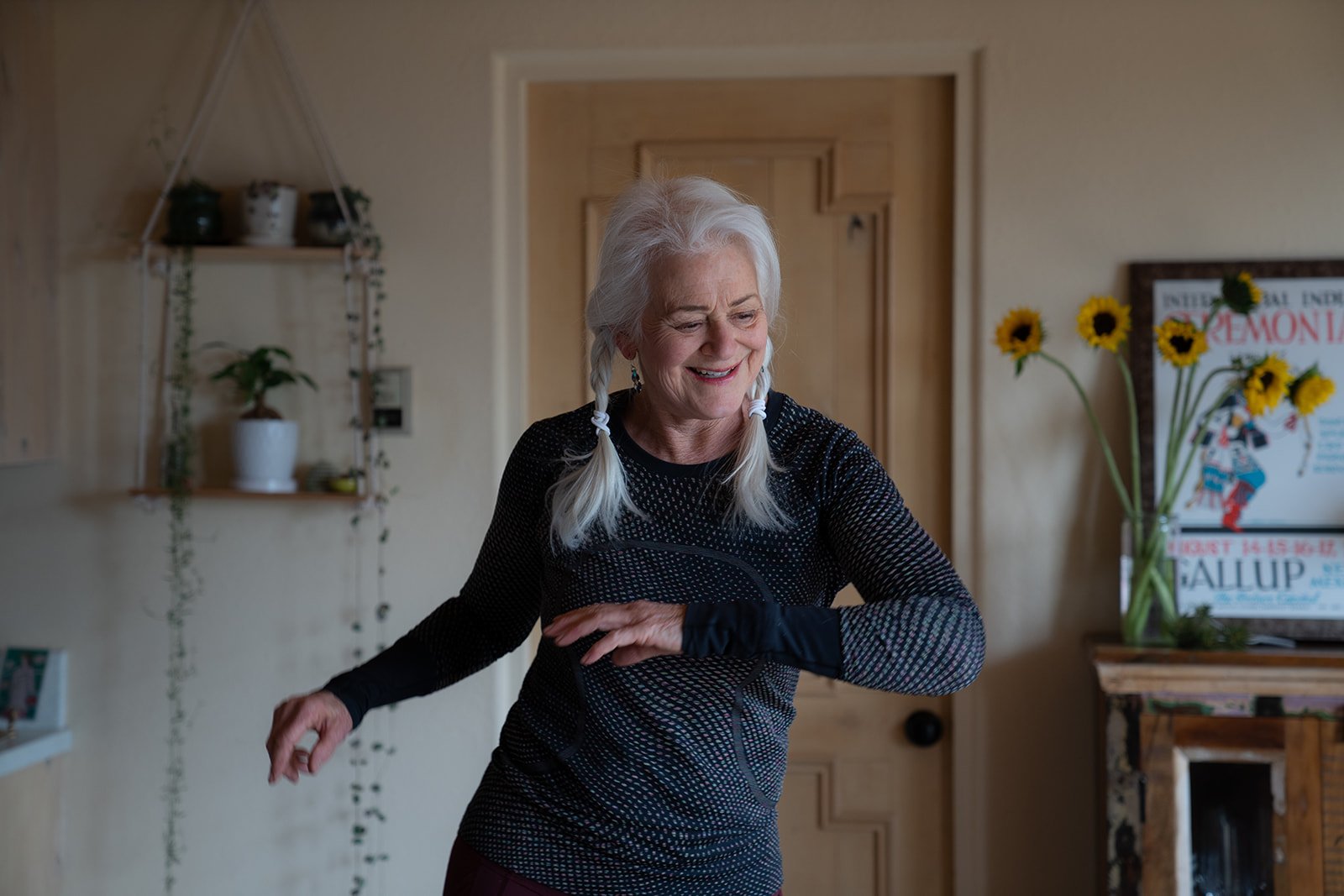Episode 17: The Body’s Way
Debbie in her power, teaching Nia at her Portland studio
Debbie Rosas was winning the Yang game. Then her body taught her the beauty of balance.
I’m watching Debbie Rosas dance and she’s gorgeous.
Really. I can’t take my eyes off of her. Goddess body. Power and grace, ease as she rises high on her toes, then drops, cat-like, touching the ground and springing up again. Softness in her turns, force in her kicks, confidence in her posture and style.
Debbie is beautiful. She’s also 72 years old. As I watch her dance I wish I’d moved like that when I was twenty. Although – having watched recordings of Debbie dancing over the decades — today, she’s even more embodied, knowing, grounded – and balanced.
See for yourself…
I’ve admired Debbie and her work – the Nia Technique, a movement practice combining dance arts, martial arts, and healing arts – since 1994. Back then I took classes whenever I could, fitting them in when family and work schedules allowed, always wanting more. Today I dance regularly at my local studio and on-demand (online Nia was a game changer during lockdown).
The seven Chakras: bodily energy centers; ways of sensing and assessing blockages, potentiality, and drives governing our attention and life force. Like Yoga, the Chakras have been part of Indian philosophy and life practice for at least 3,000 years.
Yang brain, Yin brain - it’s remarkable how accurately the attributes of Yin describe the right hemisphere, and those of Yang – which dominates in our culture – describe the left.
Yet I had no idea how far-reaching Debbie’s knowledge of both the body and the brain was until I spoke with her early this year. Our conversation was so inspiring that I wanted her to share her message (and example!) with you. But first: some background.
Back in the ‘80s “aerobics” was the thing. Lots of jumping, sweating, marching in place, keeping up. “No pain no gain!” was the call to action, and speaking from experience there was pain. I remember shin splints (they’re memorable) yet convinced myself that they, along with the feeling I’d NEVER meet the body standards of my teacher (let alone her color-coordinated wristbands), were the price to be paid for getting fit.
”No pain no gain,” like so much in the ‘80s, was full-on Yang. As was the competitive vibe I felt in most classes, which is why I preferred to hide in the back. Not to mention the confusion between my body’s way of moving and the message that there was a “right” way, one that I should aspire to. It all felt disconnected from the intelligence of the body itself and its innate desire to move. Though back in the ‘80s that’s a thought most would have dismissed and called “woo woo.”
Debbie taught aerobics back then, founding a popular exercise business – The Bod Squad – in Marin County, CA, just north of San Francisco. As her top students mastered the moves, Debbie – whose mind for business is as agile as her body – wondered about a “belt” program, like those earned in Martial Arts, to recognize their advances in skill.
To understand belts, she visited a local dojo, a place that taught martial arts, for a session with the Sensei, or teacher.
Two things happened: first, the Sensei told Debbie to take off her shoes so that her feet could connect with the ground.
Second, he challenged Debbie’s belief that she was connected to her body simply because she taught fitness and dance. “I fit all of the guidelines for ‘fitness’ in the ‘80s,” she recalls. “But he was right. I wasn’t really living in my body.”
This awakening, and Debbie’s affinity for the practices and philosophy of martial arts, changed everything.
Debbie, back in the day.
Imagining Nia, way back in the ‘80s, was the turning point.
Nia started as “NIA” – short for Non Impact Aerobics, which Debbie pioneered. As that phrase took on a life of its own, “Nia” came to mean more than what “NIA” originally implied. When I first heard of Nia, about 10 years after Debbie created it, a friend who knew of my interest in neuroscience, told me it stood for “neuro-integrative action.”
That made sense, once I tried it. The balance of structure (Nia is built on 52 basic dance steps which can be assembled in ever-evolving ways) and spontaneous Free Dance kept me challenged, learning, yet never overwhelmed. Often I’d find myself tracking the steps with spoken percussion – think of beat boxing you wouldn’t want anyone to hear – and sensed that my brain was actively recruiting from a range of circuits to accelerate my learning. I’d end each class feeling both physically and mentally upgraded.
Dance, after all, turns out to be a very brain-healthy activity. Balance, rhythm, memorization, response to music, and self-expression all fire plenty of brain-healthy activity. Add the social aspects and the overall fun and you get your happy hormones surging, too. Studies show correlations between dance and mood improvement, as well as healthy aging. This Harvard article shares more.
Yet Nia, for me, offers something beyond. I think it comes from Debbie’s intention to have anyone, everyone, fall in love with their body. It also stems, I believe, from her inherent understanding of the brain and how it works best when both creative and directed. The balance of structured movement and joyful self-expression feels very “whole brain” to me. Speaking with Debbie it was clear that wholeness was an important Nia goal.
You’ll hear Debbie talk about Yin and Yang in this episode. I love what she shared. My belief is we have enough Yang in our culture. More than enough (as it often goes with Yang). Debbie’s vision balances the healthy, powerful Yang inherent in structured movement with grounded, inner, juicy Yin. The balance brings joy to my body, mind, and spirit, as does talking with Debbie.
I hope you’ll enjoy all she shares in our conversation, and in the links below.
The Nia Technique website: NiaNow.com
Nia On Demand: niaondemand.com
Follow Nia Technique on Instagram
Follow Debbie on Instagram
Enjoy this 5-minute Dance Break – and bounce on over to Episode 16, which is all about Oxytocin, for another Nia break.
Heads up: In this interview Debbie mentions how much she’s learned about the body through her work with educator Gil Hedley, who brings together bodyworkers, wellness and fitness practitioners, spiritual leaders and others to dissect and learn from the human form. Gil shares a bounty of videos and other information on his website, gilhedley.com, should taking a look “inside” be of interest to you.
